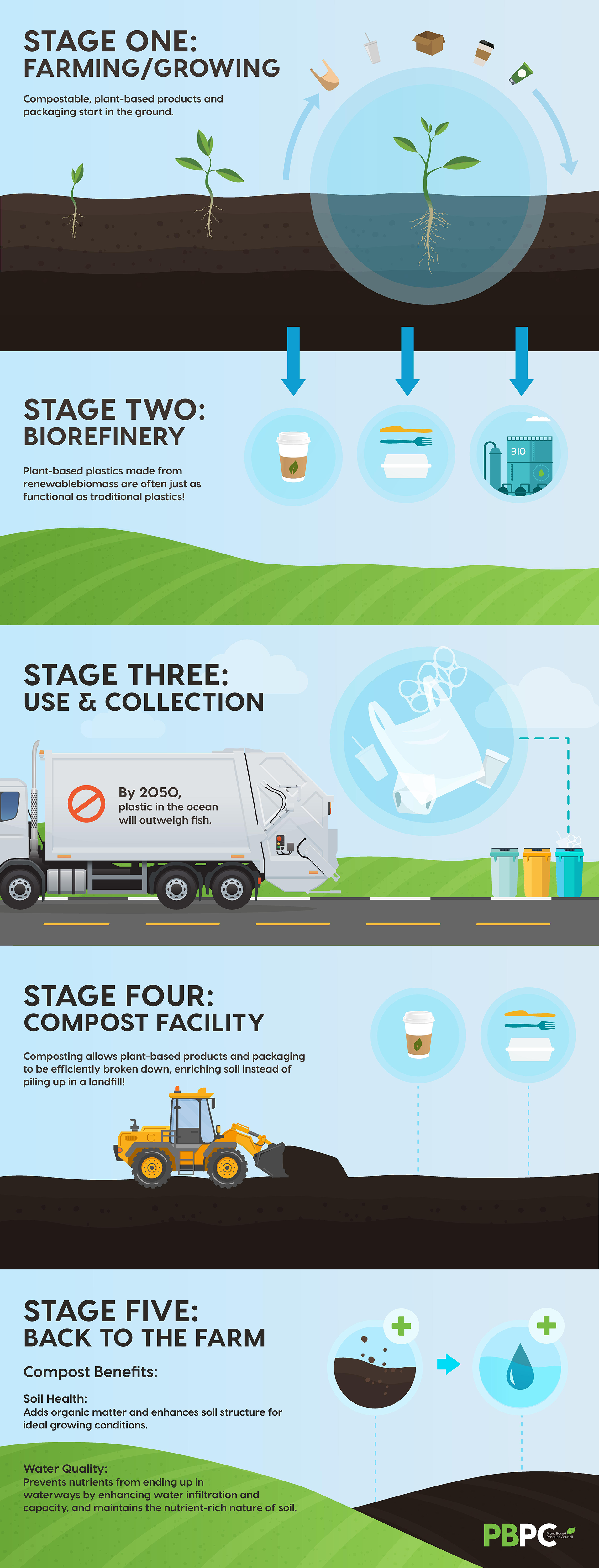One of today’s greatest environmental challenges is the increasing global appetite for consumer goods and convenient packaging. When disposed of improperly, these materials harm our soil, pollute our oceans, and threaten our wildlife. Compostable plant-based materials represent a powerful tool that can mend our nation’s depleted soil resources, benefiting farmers, homeowners, landscape managers, and urban agriculturalists. These materials help divert food waste from landfills into compost facilities, where they create soil-enriching compost instead of harmful landfill emissions from traditional materials, and in foodservice applications, food waste as well.
In 2019, we sat down with staff from the largest municipal food scrap composting facility on the east coast (in Maryland) to learn more about the key role composting plays in our value chain. Check out our interview with Denice Curry of the Recycling – Resource Recovery Division of Prince George’s County, Department of the Environment.
Here is an overview of how the composting process works, with an infographic you are welcome to use and share:

Some studies do not show the full picture on composting and plant-based products. We’re working to educate every day. Instead of becoming burdensome and costly landfill input, food waste and yard waste plus compostable, plant-based materials can together be made into a value-added product called compost. Compost is rich in organic matter and nutrients, its benefits include:
- Increased soil health
- Structural amelioration
- Increased water holding capacity
- Greater water infiltration capabilities.
PBPC held a webinar with Agri-Pulse overviewing compost and its benefits, startup challenges and obstacles to implementation at the community level.
Webinar:
Please feel free to share and use any of the graphics to better educate your audience about the stages of composting. Individual stages can be downloaded at the links below.
Stage 1: Farmers across the country plant a wide variety of crops every year, many of which are converted to plant-based materials and products.
Stage 2: We continue now to see renewable feedstocks taken to biorefineries in stage 2, where innovative green chemistry practices allow American workers to convert them into plant-based plastics, textiles and many other products.
Stage 3: Stage 3 of our International Compost Awareness Week graphic series highlights the widespread uses of plant-based material – packaging and foodware to building materials and medical devices. 32% of traditional plastic packaging escapes collection systems, often ending up in the ocean and harming our environment.
Stage 4: On stage 4, we explore municipal and industrial composting services – low-cost alternatives to traditional plastic recycling. BioCycleMag identified 4,713 composting facilities nationwide.
Stage 5: Once the composting process is complete, plant-based materials are returned to the ground as nutrient-rich compost – closing the loop on a circular economy, and that ends our five-stage composting tour.
